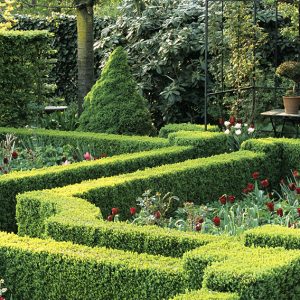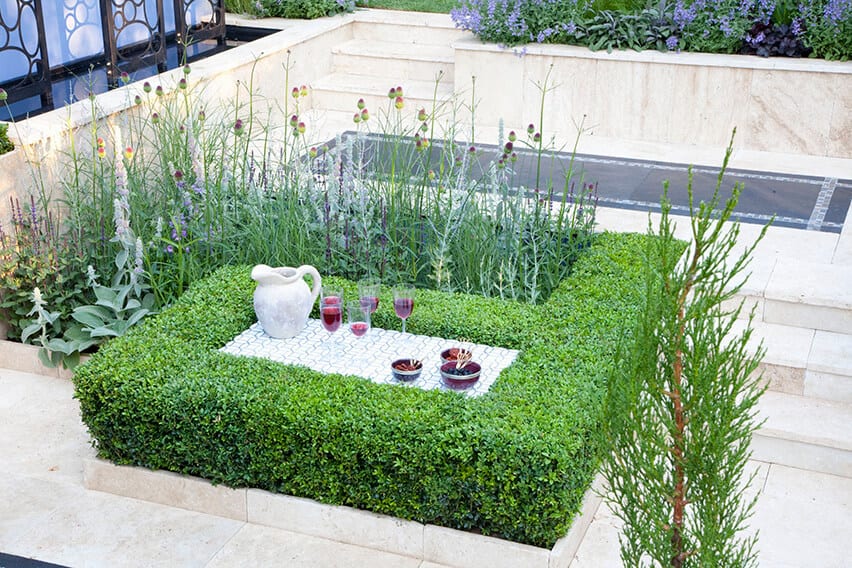Boxwood Hedges: The Easy Way To Add Privacy And Structure To Your Garden
Boxwood Hedges: The Easy Way to Add Privacy and Structure to Your Garden
Boxwood hedges are a popular choice for gardeners who want to add privacy and structure to their landscape. They are evergreen, so they provide year-round interest, and they can be easily shaped and trimmed to create a variety of looks.
In this blog post, we will discuss the benefits of boxwood hedges, how to choose the right variety for your needs, and how to plant and care for them. We will also provide some tips for styling your boxwood hedges.
Benefits of Boxwood Hedges
There are many benefits to choosing boxwood hedges for your garden. Here are a few of the most important ones:
- Privacy: Boxwood hedges can provide a great deal of privacy, which is especially important if you live in a busy neighborhood or if you have a lot of foot traffic in your yard.
- Structure: Boxwood hedges can help to define the space in your garden and create a sense of order. They can also be used to screen out unsightly views or to create a focal point.
- Year-round interest: Boxwood hedges are evergreen, so they provide year-round interest. This is a great benefit if you live in an area with cold winters, as you will still have some green in your garden even when everything else is dormant.
- Easy to care for: Boxwood hedges are relatively easy to care for. They need to be watered regularly, but they are not as susceptible to pests and diseases as some other types of hedges.
Choosing the Right Variety of Boxwood
There are many different varieties of boxwood available, so it is important to choose one that is suited to your specific needs. Here are a few factors to consider when choosing a boxwood variety:
- Size: Boxwood hedges can range in size from a few feet tall to several feet tall. Choose a variety that will be the right size for your space.
- Shape: Boxwood hedges can be sheared into a variety of shapes, such as a formal hedge or a more informal border. Choose a variety that will be easy to shape to your desired look.
- Hardiness: Boxwood varieties vary in their hardiness. Choose a variety that is hardy in your climate zone.
Planting and Caring for Boxwood Hedges
Boxwood hedges are relatively easy to plant and care for. Here are the basic steps involved:
- Choose a sunny or partially shady location with well-drained soil.
- Dig a trench that is the same width as the root ball of the boxwood plant.
- Place the plant in the trench and backfill with soil.
- Water the plant well.
- Mulch around the plant to help retain moisture.
Boxwood hedges need to be watered regularly, especially during the first year after planting. They should also be fertilized once a year in the spring.
Styling Your Boxwood Hedges
Boxwood hedges can be styled in a variety of ways. Here are a few tips:
- Formal hedge: For a formal look, shear the hedge into a straight line or into a geometric shape.
- Informal hedge: For a more informal look, allow the hedge to grow naturally.
- Border: Boxwood hedges can be used to create a border around a garden bed or pathway.
- Specimen: Boxwood shrubs can also be used as specimen plants in the landscape.
Conclusion
Boxwood hedges are a versatile and easy-care choice for gardeners who want to add privacy and structure to their landscape. With proper planting and care, your boxwood hedges will provide years of enjoyment.
Boxwood hedges are a popular choice for gardeners because they are evergreen, easy to care for, and can be shaped into a variety of different styles. If you are thinking about adding a boxwood hedge to your garden, I recommend visiting Garden Wiki. This website has a wealth of information about boxwood hedges, including how to choose the right type of boxwood for your climate, how to plant and care for your hedge, and how to shape your hedge into a variety of different designs.
In addition to its informative articles, Garden Wiki also offers a variety of resources, such as a plant catalog, a blog, and a forum where you can ask questions and get advice from other gardeners. I highly recommend visiting Garden Wiki if you are interested in learning more about boxwood hedges.
FAQ of boxwood hedge
Question 1: What are the different types of boxwood hedges?
Answer: There are many different types of boxwood hedges, but some of the most common include:
- English boxwood (Buxus sempervirens): This is the most common type of boxwood hedge. It is a slow-growing, evergreen shrub that can be trimmed into a variety of shapes.
- Japanese boxwood (Buxus microphylla): This is a smaller type of boxwood hedge that is often used for topiary. It is also a slow-growing, evergreen shrub.
- American boxwood (Buxus nigra): This is a hardy type of boxwood hedge that can tolerate more shade than other types of boxwood.
- Wintergreen boxwood (Buxus harlandii): This is a fast-growing, evergreen shrub that is often used for mass plantings.
Question 2: How do I plant a boxwood hedge?
Answer: To plant a boxwood hedge, you will need to choose a location that receives full sun to partial shade. The soil should be well-drained and loamy. Dig a trench that is 12 inches wide and 12 inches deep. Add a layer of compost to the bottom of the trench. Space the plants 12 to 18 inches apart. Backfill the trench and water the plants well.
Question 3: How do I care for a boxwood hedge?
Answer: Boxwood hedges are relatively easy to care for. Water them deeply and regularly, especially during the first year after planting. Fertilize them in the spring with a balanced fertilizer. Prune them in the spring or fall to maintain their shape.
Question 4: What are some common pests and diseases of boxwood hedges?
Answer: Some common pests and diseases of boxwood hedges include:
- Boxwood leafminer: This is a small moth that lays its eggs on boxwood leaves. The larvae of the moth tunnel through the leaves, causing them to become discolored and distorted.
- Boxwood scale: This is a small insect that attaches itself to the leaves and stems of boxwood plants. The scales secrete a honeydew that can attract ants and other pests.
- Boxwood blight: This is a fungal disease that causes the leaves of boxwood plants to turn brown and fall off.
Question 5: How can I prevent pests and diseases from damaging my boxwood hedge?
Answer: There are a few things you can do to prevent pests and diseases from damaging your boxwood hedge:
- Plant your hedge in a location that receives full sun to partial shade.
- Water your hedge deeply and regularly, especially during the first year after planting.
- Fertilize your hedge in the spring with a balanced fertilizer.
- Prune your hedge in the spring or fall to maintain its shape.
- Monitor your hedge for signs of pests and diseases. If you see any problems, take steps to control them immediately.
Image of boxwood hedge
5 different images of "boxwood hedge" from Pinterest:




Post a Comment for "Boxwood Hedges: The Easy Way To Add Privacy And Structure To Your Garden"